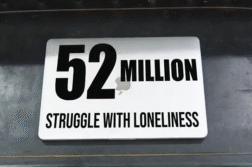ORLANDO, Fla. (Ivanhoe Newswire) — More than 300 million people worldwide suffer from depression. Now, novel therapies are changing the game when it comes to managing this often-debilitating illness. treat depression
It’s a disease that affects men and women, the old and the young, the rich and the poor. Depression doesn’t discriminate, but there are ways to help control it.
Talk therapy along with antidepressant medications have been the go-to treatments for years.
Ernest Rasyidi, MD, Psychiatrist, St Joseph Hospital says, “Medications are not 100 percent. They provide some options, but they have some limitations.”
In fact, one-third of people with depression don’t respond to antidepressants. And when the drugs do work, they can take four to eight weeks to kick in. Doctors are now looking at other ways to help people when standard treatments fail. One method called transcranial magnetic stimulation, or TMS for short, uses electrical stimulation to target areas in the brain that are underactive in people with depression.
Dr. Rasyidi continued, “What it does is it generates a very powerful magnetic field which we can then target into certain parts of the brain to stimulate activity.”
Two new FDA approved drugs have also shown promise. The first, esketamine, is a nasal spray that acts within a couple of hours. It’s derived from ketamine which is used as an anesthesia during surgeries. Esketamine relieves symptoms in about half of patients with treatment-resistant depression. And brexanolone is a newly-approved option for postpartum depression. It’s given as an infusion over two and a half days and starts to work within a few days.
Electroconvulsive therapy is another option for people with very serious, treatment-resistant depression. It uses electric impulses to trigger a controlled seizure in the brain. Like most treatments, these newer drugs and procedures pose safety risks and side effects. You and your doctor should talk about the risks and benefits.
Contributors to this news report include: Julie Marks, Field Producer; and Roque Correa, Editor.
NEW OPTIONS TO TREAT DEPRESSION
REPORT #2703
BACKGROUND: Nearly 350 million people around the world struggle with depression each year. More women are diagnosed with depression than men, and while the average age that symptoms are seen is 32, young people and the elderly also live with depression. Major depression, also known as clinical depression and major depressive disorder, is a type of mood disorder that is characterized by negative patterns of thoughts and emotions. Depression causes intense sadness, physical pains, changes in eating and sleeping habits, irritability, difficulty thinking, concentrating and making decisions, anxiety, and suicidal thoughts and behaviors. Depression is a diagnosable mental health condition. It is chronic and cannot be cured, but with an accurate diagnosis and treatment, can be managed and symptoms reduced. It is not uncommon for someone with clinical depression to have another mental health condition or a physical health condition, or both. In some cases, an illness may trigger depression, while in others depression can lead to complications and other mental and physical health problems.
(Source: https://www.bridgestorecovery.com/depression/depression-facts-and-statistics/)
COMMON DEPRESSION TREATMENTS: For most people, psychotherapy and medications give better results together than either do alone. Psychotherapy, or talk therapy, has an excellent track record of helping people with depressive disorder. Cognitive behavioral therapy (CBT) has a strong research base to show it helps with symptoms of depression. This therapy helps assess and change negative thinking patterns associated with depression. The goal is to recognize negative thoughts and teach coping strategies. Interpersonal therapy (IPT) focuses on improving problems in personal relationships and other changes in life that may be contributing to depressive disorder. Psychodynamic therapy is a therapeutic approach in recognizing and understanding negative patterns of behavior and feelings that are rooted in past experiences and working to resolve them. Antidepressant medications may help reduce or control symptoms. They often take 2-4 weeks to begin having an effect and up to 12 weeks to reach full effect. Most people will have to try various doses of medications to find what works for them.
(Source: https://www.nami.org/Learn-More/Mental-Health-Conditions/Depression/Treatment)
NASAL SPRAY BREAKTHROUGH: The FDA approval of a new depression drug gives doctors another valuable tool against depression and offers new hope for patients. “This is a game changer,” says John Krystal, MD, chief psychiatrist at Yale Medicine and one of the pioneers of ketamine research in the country. The drug is a nasal spray called esketamine, derived from ketamine. Because treatment with esketamine might be helpful to patients with treatment-resistant depression (meaning standard treatments had not helped them), the FDA expedited the approval process to make it more quickly available. In one study, 70 percent of patients with treatment-resistant depression who were started on an oral antidepressant and intranasal esketamine improved, compared to just over half in the group that did not receive the medication. “When you take ketamine, it triggers reactions in your cortex that enable brain connections to regrow. It’s the reaction to ketamine, not the presence of ketamine in the body that constitutes its effects,” Dr. Krystal says.
(Source: https://www.yalemedicine.org/stories/ketamine-depression/)
* For More Information, Contact:
James Chisum, Public Relations
jamesc@millergeer.com / (562) 493-6023
Free weekly e-mail on Medical Breakthroughs from Ivanhoe. To sign up: http://www.ivanhoe.com/ftk



